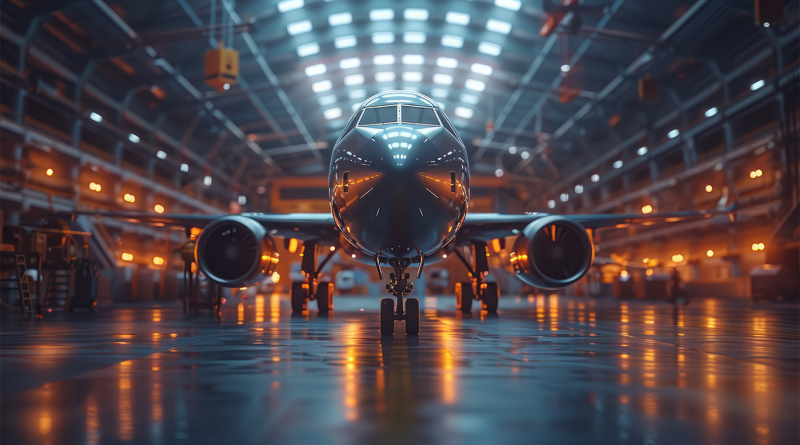How Advanced Design Tools Drive Aerospace Digital Manufacturing
Aerospace manufacturing has undergone significant transformations over the decades. Traditionally, the industry relied heavily on manual processes and physical prototyping, which were time-consuming and costly. However, the advent of digital manufacturing has introduced a new era of efficiency and innovation. Digital manufacturing leverages advanced design tools, such as digital twins and simulation technologies, to streamline production processes and enhance product quality. This shift not only reduces costs and production times but also opens new possibilities for innovation in the aerospace industry.
The Role of Advanced Design Tools in Aerospace Manufacturing
Advanced design tools are at the forefront of digital manufacturing, playing a crucial role in the aerospace industry. One of the most significant advancements is the use of digital twins. Digital twins create a virtual replica of physical assets, enabling engineers to monitor and analyze performance in real-time. This technology allows for predictive maintenance, optimizing the lifespan and performance of aerospace components. Moreover, digital twins facilitate the testing and validation of designs in a virtual environment, reducing the need for physical prototypes and significantly cutting costs.
Simulation technologies are another critical component of advanced design tools. These technologies enable the testing of manufacturing processes and product designs in a virtual space, identifying potential issues before they arise in the physical production phase. For instance, aerospace companies can simulate the stress and strain on aircraft components, ensuring they meet safety and performance standards before manufacturing begins. This proactive approach not only improves product quality but also enhances the efficiency of the manufacturing process.
AI and Machine Learning Are Optimizing Aerospace Manufacturing Processes
Artificial intelligence (AI) and machine learning are revolutionizing the aerospace manufacturing landscape. These technologies are integrated into advanced design tools to enhance predictive analytics and optimize production processes. AI algorithms can analyze vast amounts of data from manufacturing operations, identifying patterns and anomalies that humans might overlook. This capability enables real-time decision-making, ensuring that production processes are continually optimized for efficiency and quality.
Machine learning, a subset of AI, is particularly valuable in predictive maintenance and quality control. By analyzing historical data, machine learning models can predict when a component is likely to fail, allowing for timely maintenance and reducing downtime. Additionally, machine learning algorithms can identify defects in real-time, ensuring that only high-quality products move forward in the production line. Aerospace companies like Boeing and Airbus have already implemented AI-driven systems, resulting in improved production efficiency and reduced costs.
Integration of Advanced Design Tools with Existing Systems Is Key to Success
Integrating advanced design tools with existing manufacturing systems poses several challenges, but it is crucial for realizing the full potential of digital manufacturing. Legacy systems often lack the compatibility required to seamlessly integrate with new technologies, leading to data silos and inefficiencies. However, successful integration strategies can overcome these challenges and unlock significant benefits.
One effective strategy is the use of middleware solutions that bridge the gap between legacy systems and advanced design tools. Middleware facilitates data exchange and ensures interoperability between different systems. For example, aerospace companies can use middleware to integrate digital twins with their existing enterprise resource planning (ERP) systems, enabling real-time data sharing and decision-making.
Case studies of aerospace giants like Boeing and Airbus demonstrate the benefits of successful integration. Boeing’s implementation of digital twins and AI-driven analytics has resulted in improved production efficiency and reduced maintenance costs. Similarly, Airbus has leveraged simulation technologies to optimize its manufacturing processes, resulting in significant cost savings and enhanced product quality.
The future of aerospace manufacturing is poised to witness even more groundbreaking advancements, driven by emerging technologies and innovative approaches. One of the most promising trends is the increased use of autonomous systems in manufacturing operations. Autonomous robots and drones are being developed to perform complex tasks with precision and efficiency, reducing the reliance on manual labor and minimizing human error.
The Internet of Things (IoT) and blockchain technology are also set to play a significant role in the future of aerospace manufacturing. IoT devices can provide real-time monitoring and control of manufacturing processes, enhancing transparency and efficiency. Meanwhile, blockchain technology can ensure the security and traceability of data across the supply chain, reducing the risk of fraud and improving accountability.
Material science and 3D printing are other areas where significant advancements are expected. The development of new materials with enhanced properties will enable the production of lighter and more durable aerospace components. 3D printing, or additive manufacturing, allows for the creation of complex geometries that were previously impossible to manufacture, opening new possibilities for design and innovation.
Sources:
